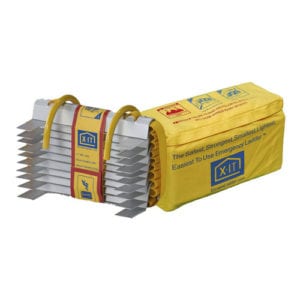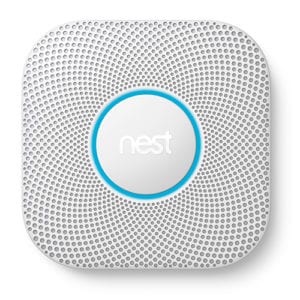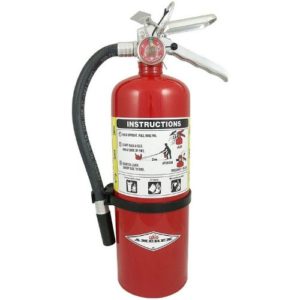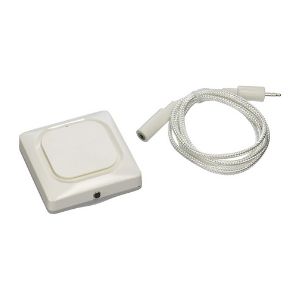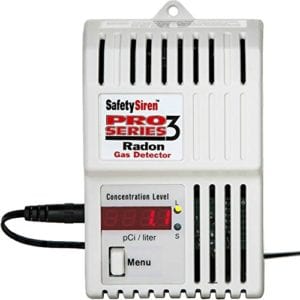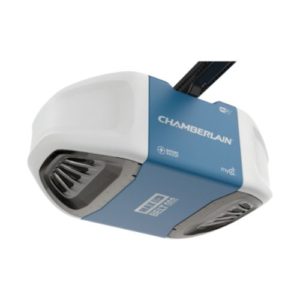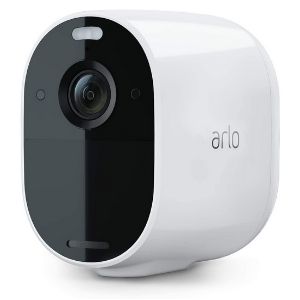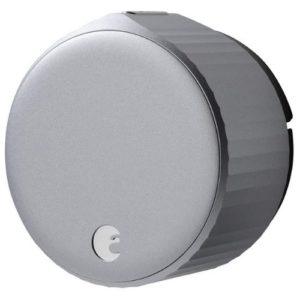Room-by-Room Guide to a Safer Home
When you come home at the end of the day, you just want to relax. But maintaining a peaceful atmosphere goes far beyond simply putting your feet up. That's why we created a room-by-room home safety guide to help you keep small problems from turning into big ones.
Ready to take a virtual walk through your home to see where you can improve safety? Let’s get to it.
Home safety tips for every room
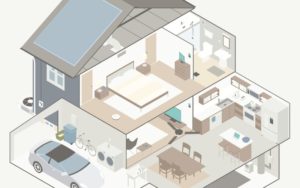
Bedroom
The average American spends almost eight hours sleeping every day. Since you spend so much time in your room, you should make sure it’s safe and sound.
Window and door locks
According to the U.S. Consumer Product Safety Commission, about 3,300 kids under the age of five are hospitalized every year for falls out of windows.1 Unintentional falls are a number one cause of non-fatal injuries for kids under 15.2
Even if you have screens in your windows, they’re not meant to bear the weight of children—or even pets. To prevent your child from falling out of an open window, check out our comprehensive buyer’s guide to window locks.
Fire escape ladders
We spend one third of the day asleep in our bedrooms, so you have a 33% chance of being there when a fire breaks out.
If you’re on the ground floor, you can escape through a window, but if you need to climb down from a second or third-story bedroom, a fire escape ladder can save the day.
Make a fire plan and evacuation route to prep for emergencies like these.
Valuables
Most folks keep jewelry, heirlooms, and other valuables in the bedroom. Instead of stashing cash and expensive baubles under the mattress, bring home a safe to keep your prized possessions secure.
Hallway
Hallways get us from Point A to Point B, but they can do much more for home security and household safety. Here are some safety measures to consider in your hallways:
Smoke detectors
Fires are scary—and deadly. The National Fire Protection Association reported that 2,720 people died in structure fires in 2018 with 57% coming from lack of smoke alarms.3,4
Smoke alarms are essential for detecting smoldering and blazing fires. They can mean the difference between life and death. Hallways are an ideal place to install smoke detectors, and you should place one in every bedroom and on every floor of your home.
There are plenty of models to choose from. We found the best smoke detectors to help keep you, your family, your pets, and your home safe.
Carbon monoxide detectors
Carbon monoxide is an odorless, poisonous gas that’s produced when you burn coal, wood, charcoal, oil, kerosene, propane, and natural gas.
While it occurs naturally in our environment, carbon monoxide becomes deadly in confined spaces. That’s why you should never leave a car running inside of the garage.
Without proper ventilation, carbon monoxide can build to toxic levels, causing illness or worse.
Carbon monoxide detectors can save your life. Install one on every floor in your home—including the basement and garage.
Check out our guide on the dangers of carbon monoxide and learn how to protect yourself and family from its effects.
Baby and pet gates
Keep kids and pets out of harm’s way—and out of rooms that are off-limits—by installing gates. Take a peek at your baby gate options—we found gates that blend with your home's design, span large spaces, and protect kids and animals from falling down stairs.
Kitchen
The kitchen is the heart of the home. Who doesn't love smelling freshly baked bread or sneaking a spoonful of cookie dough?
But all the yummy smells and tastes need things like sharp knives, hot surfaces, heavy appliances, and breakables to make them (as much as we'd like to wave a wand and see fettuccine alfredo appear in front of us). Consider the following to make your kitchen safer:
Fire extinguishers
Even the best cook can have flare-ups; the U.S. Fire Administration says that cooking accounted for 50.7% of all house fires in 2018.5
Whether you leave something on the stove too long, a curtain comes too close to the toaster, or a grease fire spirals out of control, it’s smart to have a fire extinguisher on-hand.
Not all fire extinguishers mesh well with kitchen fires (only some have dry components to combat grease), so check out our fire extinguisher guide to find the best option for your kitchen.
Cooking safety
Keeping pot handles turned in toward the stove, sharp knives stored properly, and flammable objects away from hot surfaces are all good places to start with kitchen safety.
If you’re cooking with kids, help them learn about food and cooking safety. This will make it easier to maintain the wellbeing of your tiny sous-chefs.
Baby proofing
Kitchen cabinets are full of chemicals that can poison and hinges that can pinch. To prevent kids from getting hurt in the kitchen, use a baby gate to keep them out (or install door and drawer locks) so your kids can’t get into anything harmful.
Pet cams
We all love our furry children! Keep an eye on yours when you’re away or at work with a smart pet cam. Some allow you to speak to your pet, release treats, or ensure the dog or cat sitter is doing a good job.
Here are some of the best pet cams we’ve found that will help you keep a better eye on Fluffy.
Pet feeders
If you work long hours or are away for the weekend, you can still make sure your pets get breakfast, lunch, and dinner.
Here are our favorite smart pet feeders—each comes with technology automated food dispensing and video streaming.
Bathroom
The place where we clean ourselves up can be a danger zone. Lots of people visit emergency rooms every year due to injuries that happen in bathrooms—like burns, falls, and near-drowning.
Here are some ways to boost safety in the bathroom and keep it a haven:
Flood sensors
Bathrooms are the number one source of flooding because of toilets, sinks, and showers.
Catching a leaky pipe or massive burst before it becomes catastrophic will save you time, money, and a major headache.
That’s where flood sensors come into play. Most are equipped with smart technology, so you get an alert on your phone if it detects water.
Bath mats
Anyone is susceptible to slipping on wet surfaces, but elderly people are particularly vulnerable according to the CDC.6 The fix? A good old bathmat.
Choose one that lays completely flat to avoid tripping over an upturned edge. Also lay a slip-resistant pad on the shower floor to prevent falls. The more traction you can get in the bathroom, the better.
Older homes might not have the appropriate plumbing to control water temperature, meaning your faucets can become boiling water dispensers without warning. Keep kids and yourself burn free by installing scald guards on all of your home’s sinks and tubs.
Tub safety
Your child's bathtime is for splashing, playing, and getting squeaky clean, but it should never be done without supervision. Children can drown in a matter of minutes in as little as two inches of standing water.
So if you’re filling up the tub or letting it drain, stay in the bathroom until it’s empty.
If you have little ones, always keep the toilet seat down and secure with a toilet seat lock. They can fall in and drown if they’re small enough. Plus, a toilet is full of icky germs you definitely don’t want them touching.
Black mold
Black mold isn't as lethal as past media hype has claimed, but its mycotoxins (naturally produced fungi) can harm those with respiratory allergies, asthma, or immune suppression.
Like all molds, black mold likes to grow in wet, warm places like the bathroom and basement. Use our guide to black mold to learn more about preventing, detecting, and remediating it.
Laundry room
The average American household does multiple loads of laundry per week. Since we spend so much time in the laundry room, make it a safe environment by paying close attention to these hazards:
Dryer lint
According to the US Fire Administration, failure to clean dryers is the leading cause of fires involving this common appliance.7 That’s because dryers collect lint, and lots of it.
To avoid a dryer and house fire, clean your dryer lint from the trap after every use. If you're in the "cleaning out the lint trap is therapeutic" club (we are), this shouldn't be a problem for you.
Also inspect the dryer vent for excess lint once a month. The cleaner your dryer is, the less likely it will kindle for a blaze.
Water hook-ups
Your washer's water supply and drainage pipe can dump tons of water on your floor if something goes wrong during a wash cycle. Even a small amount of water can damage your home.
Get in the habit of checking your water hook-ups monthly so you can avoid a flood worthy of an ark. Also, look into smart washers and dryers that you can monitor from your phone, so you’ll know right away if there’s a problem.
If you have a gas dryer, check and double-check the hook-ups. Gas leaks can cause explosions and fires in your home if they accumulate to highly concentrated levels.
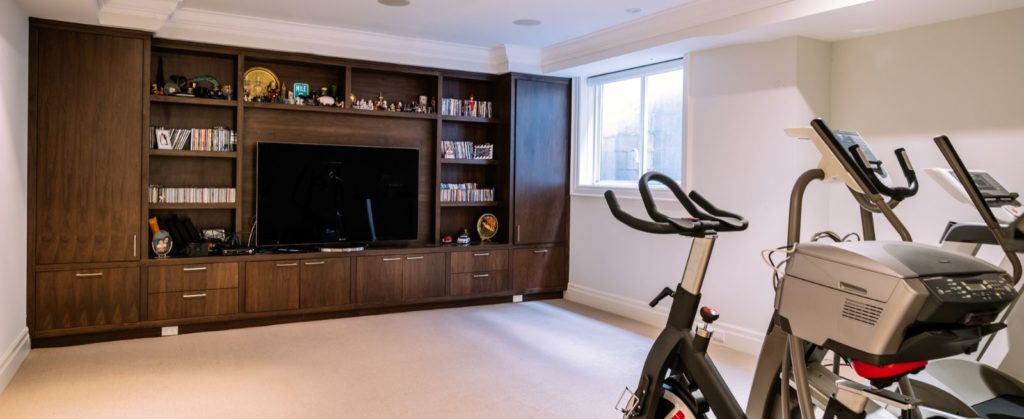
Basement
Whether your basement is a livable space or rough around the edges, keep the following in mind overall household safety.
Flood prevention and remediation
Basements are magnets for moisture and flooding. Whether a pipe bursts, a storm rolls through, or a sump pump fails, your basement can become pretty soggy, pretty quick.
There are some great flood prevention measures you can use to stop flooding from happening in the first place. You can also use a water leak sensor to spot leaks before they get out of hand.
In the unfortunate event that your house floods, you can use some DIY flood remediation procedures to help bail you out until flood specialists arrive.
If you’re moving into a new neighborhood, check if it's in a flood zone first. That way, you’ll know if you need to take extra steps to prevent your basement from turning into an indoor swimming pool, or if you need to buy flood insurance .
Radon detection
Radon is a radioactive gas that comes from the soil. The scary part about radon? It’s the second leading cause of lung cancer after smoking,8 and it’s impossible to detect without equipment since it’s odorless and invisible.
You should definitely research radon levels in your area if you’re buying a home. The same goes for if you’re building so your developer can incorporate proper ventilation to keep radon out of your house.
Don’t fret if you already own your home. Consider buying a radon detector to test for radon. If levels are unsafe, you can hire a radon remediator to install the necessary ventilation gear.
Storage areas
Basements are a stockpiling station for our excess belongings. If you have shelving for storage, double-check weight limits so your stuff doesn’t come crashing down onto your kids, pets, or yourself.
Anything that burns fuel can emit carbon monoxide—including your furnace and hot water heater. This makes basements another important area to install carbon monoxide detectors.
Garage
Garages are home to our cars, lawn mowers, and—usually—lots of chemicals. Here’s what to watch out for and protect in your garage:
Hazardous and flammable materials
If you must keep hazardous materials (gasoline, car fluids, fertilizer, and outdoor cleaning products) on hand, store them on high shelves away from curious children and direct heat sources. Better yet, keep them in a locked shed away from the house.
It's also a good idea to find better alternatives to (and properly dispose of) these materials when you can. Check out the EPA's guide to household hazardous waste for more information.
Garage security
Many folks overlook garage doors for home safety and security, but a garage is a tempting prospect for opportunistic thieves. Luckily, it's easy to protect with a few helpful tricks:
- Close the garage door whenever you're not in the garage to hide your valuables from prying eyes.
- Get a garage door opener with a locking function.
- If you don't have a garage, consider buying a steering wheel lock or car alarm.
Check out our guide to keeping thieves out of the garage for more tips.
Never leave a car or gas-powered tools running in the garage. Even with the door open, carbon monoxide can build to toxic levels since there isn't much airflow to push it out of your garage.
Exterior
Once you optimize the interior of your home for better safety, incorporate these outdoor tips for a seriously secure house.
Security cameras
If someone is creeping around your property, you’ll want to know about it. That’s why security cameras are a worthwhile addition to any home.
Install one on the porch to monitor packages and mail deliveries, one in the living room to watch the kids, and several around the perimeter to keep an eye out for criminal activity.
We compared the top home security cameras to find the best options out there for you to bring home. So if you’re in the market for better security, take a look.
Smart locks
Ever leave the house and forget to lock the door? Or can’t remember if you did? You're not alone—it happens to some of us multiple times a day, even when we're home.
Smart locks help you lock up with a mobile app. If you have kids who come home from school before you do or frequent pet or baby sitters, look into smart locks to make your life easier.
Smart locks also keep a log of when doors were opened so you can see if anything out of the norm is happening at your house.
Smart doorbells
Smart doorbells are an awesome complement to smart locks. They give you live streaming video of your porch with two-way communication and a surveillance camera.
If a visitor can’t get in, you can verify that they're at your house and decide whether or not to let them in. And if package plundering or a break-in ever happens, you’ll have it on tape.
Head over to our guide on the best smart doorbells to learn more.
Whether you’re letting a pet outside and want to look out for skunks or prefer to know if someone is creeping around your home at night, you can install motion-sensing lights to light up the night.
Pool gates and alarms
People with pools have a big responsibility to make them safe. To abide by most laws, that includes installing a fence. If you have little kids, you might also want a pool alarm and wearable bracelets to tell you if someone is swimming or has fallen into the pool.
Check out the latest in pool safety tech to keep everyone—including pets and wildlife—out of danger.
Pest control
Keep rats, ants, bats, and raccoons out of your home by properly sealing your exterior. It’s much easier to deal with a problem on the outside of your home—before a pest can infiltrate your house.
For DIY tips to keep the creepy crawlies out, check out this helpful article from Money Talks News.
Septic tank
Septic tanks can cause thousands of dollars in damage if they overflow—not to mention they can become a major health hazard.
To maintain your septic tank properly, only use septic-friendly materials, never flush any non-biodegradable objects, and conserve water.
Head over to the EPA for an in-depth guide to septic tank maintenance.
Home security systems
Home security systems are a big step up from a guard dog or deadbolt. Although they vary in price, technology, and complexity, all home security systems can help keep your home safe from intruders.
Here are some factors to consider when installing a home security system:
Professional vs DIY
Depending on how handy you are, you can save money by installing your system yourself. There's no installation cost, but it can be time-consuming. DIY security systems allow this, but others require professional installation to get you up and running.
Cellular vs landline connections
The way a monitored home security system connects to the service station is important. Most monitoring plans use cell towers to stay in touch with response centers, while some of the cheapest plans opt for a landline or internet connection.
Cellular (with a battery backup) is the most secure option because it's harder to physically tamper with. Landline and internet connections, on the other hand, are susceptible to power outages, meddling, and weather.
Some home security companies require you to buy 24/7 monitoring packages with your home security system. While this costs more, you do get the benefit of having someone keep an eye on your home around the clock.
Smart home
Letting someone in, seeing who’s at the door, and getting fire detector alerts on your phone gives you a lot of convenience and power. Home security systems run the gamut with products and services, but opting for high-tech home automation is the way of the future—and a path to safer living.
Related articles
- Home Maintenance and Safety Checklists
- Emergency Kits 101: How to Be Prepared for Anything
- Kitchen Safety Tips for Kids (and Parents!)
- Home Safety FAQ
- Common Household Poisons
- How to Deal with Asbestos in Your Home
- Fall Home Safety Guide
- Winter Home Safety Guide
- Complete Spring Cleaning Checklist
- Summer Home Safety Guide
Sources
- CPSC, "Window Safety Tips For National Window Safety Week 2018," April 2018. Accessed July 23, 2020.
- CDC, "CDC Childhood Injury Report," February 2019. Accessed July 23, 2020.
- Ben Evarts, National Fire Protection Association, "Fire Loss in the United States," October 2019. Accessed July 23, 2020.
- Marty Ahrens, National Fire Protection Association, "Smoke Alarms in U.S. Home Fires," January 2019. Accessed July 23, 2020.
- US Fire Administration, "U.S. Fire Statistics," March 2020. Accessed July 23, 2020.
- CDC, "Important Facts about Falls," February 2017. Accessed July 23, 2020.
- US Fire Administration, "Clothes Dryer Fire Safety Outreach Materials." Accessed July 23, 2020.
- American Lung Association, "What Causes Lung Cancer," March 2020. Accessed July 23, 2020.
Disclaimers
*Certain content that appears on this site comes from Amazon. This content is provided “as is” and is subject to change or removal at any time. Safewise.com utilizes paid Amazon links.
†Google, Google Nest Protect, and other related marks are trademarks of Google LLC.
Recent Articles

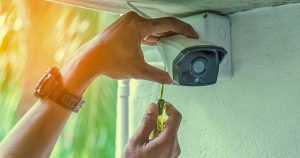


The post Room-by-Room Guide to a Safer Home appeared first on SafeWise.
Article source here: Room-by-Room Guide to a Safer Home

